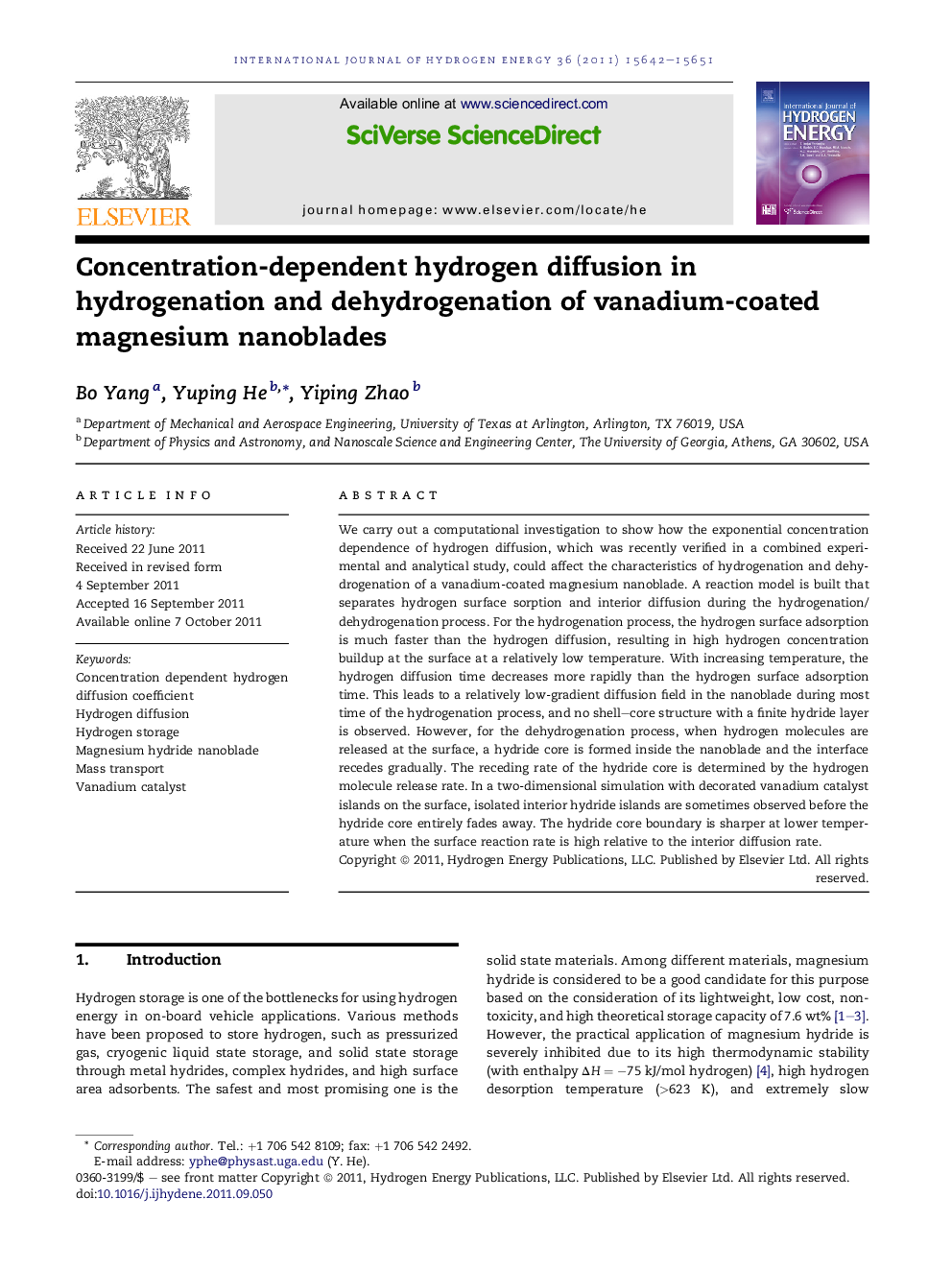| Article ID | Journal | Published Year | Pages | File Type |
|---|---|---|---|---|
| 1277361 | International Journal of Hydrogen Energy | 2011 | 10 Pages |
We carry out a computational investigation to show how the exponential concentration dependence of hydrogen diffusion, which was recently verified in a combined experimental and analytical study, could affect the characteristics of hydrogenation and dehydrogenation of a vanadium-coated magnesium nanoblade. A reaction model is built that separates hydrogen surface sorption and interior diffusion during the hydrogenation/dehydrogenation process. For the hydrogenation process, the hydrogen surface adsorption is much faster than the hydrogen diffusion, resulting in high hydrogen concentration buildup at the surface at a relatively low temperature. With increasing temperature, the hydrogen diffusion time decreases more rapidly than the hydrogen surface adsorption time. This leads to a relatively low-gradient diffusion field in the nanoblade during most time of the hydrogenation process, and no shell–core structure with a finite hydride layer is observed. However, for the dehydrogenation process, when hydrogen molecules are released at the surface, a hydride core is formed inside the nanoblade and the interface recedes gradually. The receding rate of the hydride core is determined by the hydrogen molecule release rate. In a two-dimensional simulation with decorated vanadium catalyst islands on the surface, isolated interior hydride islands are sometimes observed before the hydride core entirely fades away. The hydride core boundary is sharper at lower temperature when the surface reaction rate is high relative to the interior diffusion rate.
► We investigate how hydrogen diffusion affects the (de)hydrogenation of a vanadium-magnesium nanoblade. ► A reaction model is built based on hydrogen surface sorption and interior diffusion. ► No shell-core structure with a finite hydride layer forms during hydrogenation. ► During dehydrogenation, a hydride core forms inside the nanoblade.
